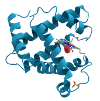Genetic and Evolutionary Computation Conference (GECCO 2015)
Madrid, Spain
July 11-15, 2015
Abstract
Active sites are regions in the enzyme surface designed to interact with other molecules. Given their importance to enzyme function, active site amino acids are more conserved during evolution than the whole sequence, and can be a useful source of information for function prediction. For this reason, great effort has been put into identifying active sites in proteins. The majority of methods for this purpose uses an active site template of a protein of known function to search for similar structures into proteins of unknown function. In this direction, we recently proposed GASS (Genetic Active Site Search), a method based on an evolutionary algorithm to search for active sites in proteins. Although the method obtained very accurate results, its main strength and weakness are related to using only the spatial distance from the template to the protein to evaluate candidate sites. In this direction, this paper proposes MeGASS, a multiobjective version of GASS that considers also the depth of the residues when looking for active sites. This is important, as active sites are known for being closer to the protein surface to allow interactions with ligands. Results showed the depth attribute improves over the results of GASS, and its role into the method is worth further investigation.
